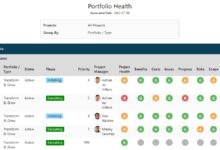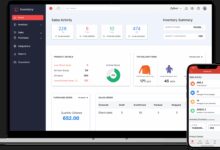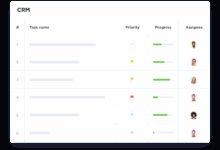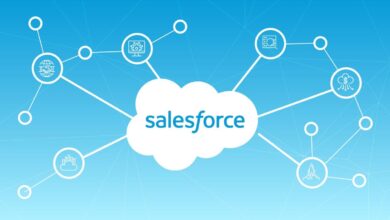CRM Software Comparison Chart: 7 Powerful Tools Compared
Choosing the right CRM can feel overwhelming—especially when dozens of options promise the world. That’s why we’ve built this in-depth CRM software comparison chart to cut through the noise and help you pick the best platform for your business needs.
What Is a CRM Software Comparison Chart and Why It Matters

A CRM software comparison chart is more than just a list of features. It’s a strategic tool that helps businesses evaluate customer relationship management platforms side by side, based on functionality, pricing, scalability, integration capabilities, and user experience. With the global CRM market projected to exceed $120 billion by 2028, making an informed decision has never been more critical.
Defining the CRM Software Comparison Chart
At its core, a CRM software comparison chart visually organizes key data points across multiple CRM platforms. These charts typically include columns for each software and rows for criteria such as contact management, sales automation, marketing tools, customer support, mobile access, third-party integrations, and pricing tiers.
- Enables side-by-side evaluation of top CRM platforms
- Highlights strengths and weaknesses of each system
- Helps align software capabilities with business goals
Such charts are widely used by decision-makers in sales, marketing, customer service, and IT departments to streamline vendor selection. They’re especially useful during digital transformation initiatives or when scaling operations.
Why You Need a CRM Software Comparison Chart
Without a structured comparison, businesses risk investing in software that doesn’t scale, lacks essential integrations, or overwhelms users with complexity. A well-researched CRM software comparison chart reduces guesswork and minimizes costly migration efforts down the line.
“A CRM isn’t just a database—it’s the central nervous system of your customer interactions.” — Forbes
For example, a small startup might prioritize affordability and ease of use, while an enterprise may need advanced analytics and API access. The comparison chart helps match these priorities with real-world performance metrics from user reviews, expert analysis, and hands-on testing.
Top 7 CRM Platforms in Our Comparison Chart
To build a comprehensive CRM software comparison chart, we evaluated over 20 platforms before narrowing it down to the top seven based on market share, user satisfaction (G2, Capterra), feature depth, and scalability. These include Salesforce, HubSpot, Zoho CRM, Microsoft Dynamics 365, Pipedrive, Freshsales, and Insightly.
Salesforce: The Industry Leader
Salesforce dominates the CRM landscape with a 19.8% market share (Statista, 2023). Known for its robust customization, AI-powered Einstein analytics, and extensive AppExchange ecosystem, Salesforce is ideal for mid-sized to large enterprises.
- Strengths: Advanced automation, AI insights, global support
- Weaknesses: Steep learning curve, high cost for full suite
- Pricing: Starts at $25/user/month (Essentials), up to $300+/user/month (Unlimited)
Salesforce’s flexibility allows deep integration with ERP, marketing, and service cloud modules. However, implementation often requires consultants, making it less ideal for bootstrapped teams.
HubSpot: Best for Inbound Marketing
HubSpot stands out in the CRM software comparison chart for its free tier and seamless alignment between sales, marketing, and service hubs. Its intuitive interface makes it a favorite among SMBs and startups.
- Strengths: Free CRM with full functionality, excellent email tracking, content tools
- Weaknesses: Limited customization in lower tiers, enterprise features require premium plans
- Pricing: Free plan available; paid tiers start at $45/month (Starter)
HubSpot’s ecosystem includes CMS, SEO tools, and social media management, making it a one-stop shop for growth-oriented teams. Learn more at HubSpot CRM Overview.
Zoho CRM: Most Affordable Full-Stack Option
Zoho CRM delivers exceptional value with a modular design and AI assistant (Zia). It’s particularly strong in sales forecasting, workflow automation, and multi-channel communication.
- Strengths: Low pricing, high feature density, strong API access
- Weaknesses: Interface feels cluttered to new users, support response times vary
- Pricing: Starts at $14/user/month (Standard), $52/user/month (Enterprise)
Zoho integrates natively with other Zoho apps (Books, Campaigns, Desk), making it ideal for businesses already in the Zoho ecosystem.
Key Features to Compare in a CRM Software Comparison Chart
When building or using a CRM software comparison chart, focus on features that directly impact productivity, customer retention, and revenue growth. Not all CRMs excel in every area—some prioritize sales pipelines, others customer service or marketing automation.
Contact and Lead Management
This is the foundation of any CRM. Look for tools that allow bulk imports, custom fields, lead scoring, tagging, and segmentation. Salesforce and HubSpot lead here with smart contact merging and behavioral tracking.
- Automated data capture from emails, forms, and calls
- Duplicate detection and merge functions
- Customizable lead lifecycle stages
For example, Pipedrive uses a visual sales pipeline that simplifies lead tracking, while Zoho offers round-robin lead assignment for teams.
Sales Automation and Pipeline Tracking
A powerful CRM automates repetitive tasks like follow-up emails, task reminders, and deal stage updates. In our CRM software comparison chart, Pipedrive and Freshsales shine with drag-and-drop pipeline builders and activity reminders.
- Email sequences and templates
- Deal probability forecasting
- Activity-based triggers (e.g., call logged → next task assigned)
Microsoft Dynamics 365 integrates deeply with Outlook and Teams, making it ideal for organizations embedded in the Microsoft ecosystem.
User Experience and Interface Design in CRM Software Comparison Chart
No matter how powerful a CRM is, poor usability kills adoption. A 2023 Gartner study found that 43% of CRM projects fail due to low user engagement. That’s why interface design is a critical factor in any CRM software comparison chart.
The best platforms offer customizable dashboards with real-time KPIs. HubSpot and Salesforce allow users to build role-specific views—sales reps see pipelines, managers see forecasts, support teams see ticket volume.
- Drag-and-drop widgets
- Pre-built templates for common roles
- Mobile-responsive layouts
Freshsales, for instance, uses a modern, clean UI with color-coded deals and instant search, reducing training time.
Mobile App Performance
With 60% of sales professionals working remotely (Salesforce State of Sales Report), mobile access is non-negotiable. Evaluate mobile apps for offline access, voice-to-note capabilities, and camera integration (e.g., scanning business cards).
- iOS and Android compatibility
- Offline mode for data entry
- Push notifications for task deadlines
Salesforce’s mobile app supports AI-powered next-best-action suggestions, while Zoho CRM offers voice commands for logging calls.
Integration Capabilities in CRM Software Comparison Chart
A CRM doesn’t exist in isolation. It must connect with email, calendar, phone systems, marketing tools, e-commerce platforms, and accounting software. Integration depth is a major differentiator in our CRM software comparison chart.
Native vs. Third-Party Integrations
Native integrations (built-in, no coding) are faster and more reliable. HubSpot natively connects with Gmail, Outlook, Shopify, and WordPress. Salesforce uses AppExchange with over 3,000 apps, but many require configuration.
- Common native integrations: Google Workspace, Microsoft 365, Zoom, Slack
- Popular third-party connectors: Zapier, Make (Integromat), Tray.io
- API access for custom development
For example, Insightly offers native integration with Mailchimp and QuickBooks, making it ideal for small service businesses.
API and Developer Access
Enterprises and tech-savvy teams need robust APIs for custom workflows. Salesforce and Microsoft Dynamics offer REST/SOAP APIs with extensive documentation. Zoho provides a free developer edition for sandbox testing.
“API-first CRMs enable future-proof scalability.” — TechCrunch
Check for webhook support, rate limits, and SDK availability when comparing platforms. Pipedrive’s API is well-documented but lacks some advanced querying options found in Salesforce.
Pricing Models in CRM Software Comparison Chart
Pricing transparency is a major pain point. Some CRMs charge per user, others per feature module, and some hide costs behind add-ons. A clear CRM software comparison chart breaks down total cost of ownership (TCO).
Subscription Tiers and Hidden Costs
Most CRMs use tiered pricing. HubSpot’s free tier is generous, but advanced reporting costs extra. Salesforce bundles features into “Clouds” (Sales, Service, Marketing), which can inflate costs.
- Watch for: Per-module fees, storage overages, training costs
- Ask about: Annual vs. monthly billing discounts
- Consider: Implementation and onboarding services
For example, Microsoft Dynamics 365 starts at $65/user/month but can exceed $200/user/month with full suite licensing.
Free CRM Options and Trials
Several platforms offer free plans: HubSpot (unlimited users), Zoho CRM (up to 3 users), and Freshsales (up to 10 users). These are excellent for testing before committing.
- Free tiers often lack phone support and advanced automation
- Trials typically last 14–30 days (Salesforce offers 30-day free trial)
- Some require credit card (Pipedrive), others don’t (HubSpot)
Use free versions to test data import, mobile access, and basic workflows before upgrading.
Customer Support and Training Resources
Even the best CRM requires support. Evaluate response times, availability (24/7 vs. business hours), and training materials. This is often overlooked in CRM software comparison charts but can make or break adoption.
Support Channels and Response Time
Salesforce offers 24/7 phone and chat support on higher tiers, but basic plans get email-only. HubSpot provides live chat and community forums across all plans.
- Phone, email, chat, and ticketing systems
- Priority support for enterprise clients
- Knowledge base and video tutorials
Zoho CRM’s support is primarily ticket-based, with average response times of 8–12 hours.
Onboarding and Certification Programs
HubSpot Academy offers free CRM certifications. Salesforce has Trailhead, a gamified learning platform with over 2 million users. These resources reduce training costs and improve long-term success.
“Companies that invest in CRM training see 3x higher adoption rates.” — CSO Insights
Microsoft provides guided setup for Dynamics 365, while Pipedrive offers live onboarding webinars.
Real-World Use Cases in CRM Software Comparison Chart
The best CRM depends on your industry and business model. Let’s explore how different sectors benefit from specific platforms in our CRM software comparison chart.
SMBs and Startups
For small businesses, affordability and ease of use are key. HubSpot and Zoho CRM are top picks due to free tiers, intuitive interfaces, and quick setup.
- Automate follow-ups with email sequences
- Track leads from website forms
- Integrate with social media and e-commerce
A local marketing agency might use HubSpot’s free CRM to manage client pipelines and track campaign ROI.
Enterprise Sales Teams
Large organizations need scalability, security, and deep analytics. Salesforce and Microsoft Dynamics 365 lead here with role-based permissions, audit logs, and AI forecasting.
- Multi-currency and multi-language support
- Advanced reporting with custom dashboards
- Compliance with GDPR, HIPAA, SOC 2
A global SaaS company might use Salesforce to manage complex sales cycles across regions.
Customer Service and Support Teams
CRMs with built-in service hubs (Salesforce Service Cloud, HubSpot Service Hub) help track tickets, manage knowledge bases, and measure CSAT.
- Live chat and ticketing systems
- Customer feedback collection
- SLA tracking and escalation rules
Freshsales includes built-in phone and chat, making it ideal for support-heavy teams.
How to Use This CRM Software Comparison Chart Effectively
A CRM software comparison chart is only as good as the questions it helps answer. Follow these steps to maximize its value in your decision-making process.
Define Your Business Requirements First
Before comparing features, list your must-have capabilities. Are you focused on lead generation? Customer retention? Sales forecasting? This ensures you don’t get distracted by flashy but irrelevant features.
- Involve stakeholders from sales, marketing, and IT
- Prioritize integration needs (e.g., Shopify, QuickBooks)
- Estimate user count and growth over 2–3 years
For example, an e-commerce brand might prioritize order history syncing and cart abandonment tracking.
Test Drive Top Contenders
Use free trials to import real data, test workflows, and gather team feedback. Set up a sample pipeline and simulate a sales cycle to evaluate usability.
- Import sample contacts and deals
- Test email tracking and automation
- Check mobile app functionality
Many vendors offer live demos—take advantage to ask specific questions.
What is the best CRM for small businesses?
HubSpot and Zoho CRM are top choices for small businesses due to their free or low-cost plans, ease of use, and strong automation features. HubSpot excels in marketing integration, while Zoho offers more customization at a lower price.
Which CRM has the best mobile app?
Salesforce and Freshsales are widely regarded as having the most powerful mobile CRM apps, offering offline access, voice logging, and real-time notifications. Salesforce’s AI-driven insights give it an edge for enterprise users.
Is there a truly free CRM worth using?
Yes—HubSpot CRM offers a robust free plan with unlimited users, contact management, email tracking, and deal pipelines. It’s ideal for startups and small teams looking to get started without upfront costs.
How do I migrate data to a new CRM?
Most CRMs support CSV imports for contacts and deals. For complex migrations, use tools like Zapier or hire a consultant. Always back up your data and test in a sandbox environment first.
Can a CRM integrate with my email and calendar?
Absolutely. Top CRMs like HubSpot, Salesforce, and Microsoft Dynamics 365 offer native integration with Gmail, Outlook, and Google Calendar, enabling automatic logging of emails, meetings, and tasks.
Choosing the right CRM is a strategic decision that impacts every customer-facing team. This CRM software comparison chart provides a clear, data-driven framework to evaluate top platforms based on features, pricing, usability, and scalability. Whether you’re a startup or an enterprise, the key is aligning your business needs with the right tool. Test the top contenders, involve your team, and prioritize long-term growth over short-term convenience. The best CRM isn’t the most expensive—it’s the one your team will actually use.
Further Reading:






